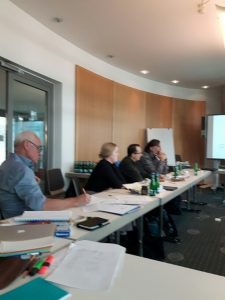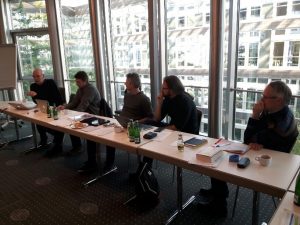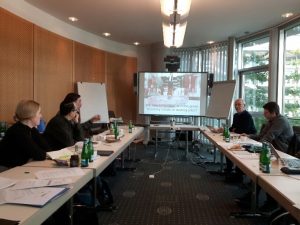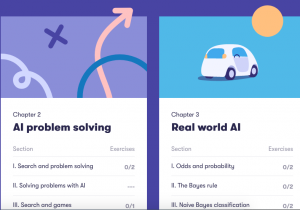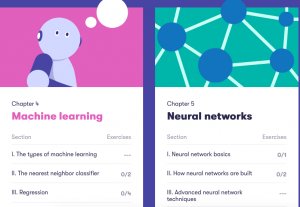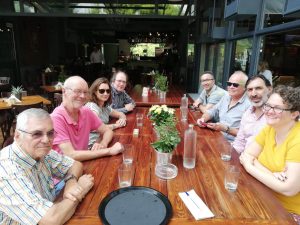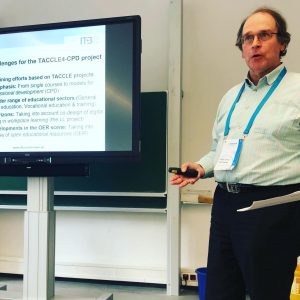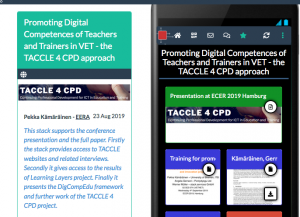Meine persönliche Erfahrungen mit der Wende – Part Two: Memories of Germany October 1990
In my previous post I shared some memories of my study visit to Germany in October/November 1989. However, I didn’t write the post primarily as a report of the study visit (with an account of my conversations at different stations). Instead, I wanted to give a picture, how I experienced the signs of change in East Germany (then DDR) when travelling in West Germany (BRD) and West-Berlin. As I mentioned in the post, I didn’t pay that much attention to the first signs of change but by the end of the journey it was clear that something bigger is happening. And a few days after I had returned, the Berlin wall and the borders elsewhere were opened. Now, it so happened that my next conference trip to Germany coincided with the German unification. To me, this is so closely linked to my memories of the October/November trip of 1989 that I prefer to write my memories of the latter trip now – rather than waiting for the 30th anniversary next year.
My participation in the “Hochschultage Berufliche Bildung 1990” in Magdeburg 1.10. – 3.10.1990
In the beginning of the year 1990 I had joined a research group “Curricular strategies for lifelong learning” that had some funding for participation in international conferences. As a follow-up to my study visit of the year 1989 I wanted to continue and deepen my exchanges with German researchers in the field of vocational education and training (VET). A special opportunity was provided by the nation-wide conference “Hochschultage Berufliche Bildung” (originally initiated by ITB in Bremen). The conference of the year 1990 had originally been given to another location but then relocated to Magdeburg. Here, it is interesting that a West-German conference was organised in East Germany. The decision was made with the idea that this helps to promote dialogue with East-German colleagues by approaching each other in the spirit of mutual learning. However, the wheels of history were spinning rapidly and the dates of the conference came to be the dates of the German unification.
The theme of the conference was “Schlüsselqualifikationen” (Key qualifications). I had come across the theme via literature – by reading Dieter Mertens’ future-oriented theses of the year 1972/1974. To me this gave rise to prepare a special paper on educational reforms in the Nordic countries and to reflect in what ways they may take up the theme ‘key qualifications’. To be sure, this last minute’s contribution hadn’t been included into the program. Nevertheless, I had prepared something for eventual exchanges.
At the conference venue it became apparent that the theme ‘key qualifications’ was overshadowed by a major theme – the unification. And instead of discussing in terms of gradually approaching each other the participants from East and West had a common concern – the rapid implementation of West-German educational legislation in the East. This included the setting up of new federal states in the area of former DDR. This included also setting up the dual system of apprenticeship while privatising the state-owned companies and decoupling the vocational schools from the company structures. To be sure, the thematic sessions that had been planned, were carried out. But the challenges of the unification took major attention.
The conference started before the date of the unification and it was opened by the last minister of education of the last (transitional) government of DDR. He and his secretary of state were received as guests of honour, but it was clear to all that they will no longer have a major role in the future educational policies. Then, shortly after, the minister of education of the Federal Republic of Germany gave a speech. In his speech there was no sign of mutual adjustment. Instead, it sounded like the agenda of the colonial power in the newly colonised region. On top of it, he broke his promise (to stay for the discussion) and announced that he has to leave immediately. As a courtesy to him, the outgoing political representatives of the last DDR government left with him – and the participants were left to discuss with each other.
The Cedefop workshop on “Key qualifications and social competences in East and West”
During the first day of the conference I was introduced by an acquaintance from BiBB to the Cedefop project manager Norbert Wollschläger, who was in charge of a Cedefop-initiated workshop that sought to discuss the theme ‘key qualifications and social competences’ from the perspective of comparing East- and West-European views. He found my paper (that brought the Nordic perspective into discussion) interesting and worth including into the program of his workshop. When entering the workshop, I realised that it was more like a round table discussion among high-rankin speakers from Cedefop (the director and his predecessor) and from affiliated institutes, including a special guest from Soviet Union (an Estonian academician with whom Cedefop was preparing cooperation). Here again, the bigger picture of ongoing transformations in East Europe started to take over. Nevertheless, my input from the Nordic perspective was well received.
As a follow-up, I got an invitation to a Soviet-European seminar (organised by the Soviet Academy of Educational Sciences and Cedefop) later in the year. That was a more high-ranking event that took place at the advent of the collapse of the Soviet Union and the seminar was overshadowed by various expectations and interests in developing business relations linked to export of educational know-how. To me it was clear that I was not part of that game and neither was Finland looking for such cooperation with its Eastern neighbour.
—
I guess this is enough of my memories of the year 1990. On an anecdotal level I can add that the trip back from Magdeburg was characterised by traffic jams in Berlin and delayed flights. The seminar in Moscow was characterised by chilly cold weather and my trip was a round trip via Copenhagen (where I attended a Nordic event). This all belonged to my working into the Nordic and European cooperation – which then characterised my later career as a VET researcher.
More blogs to come …
